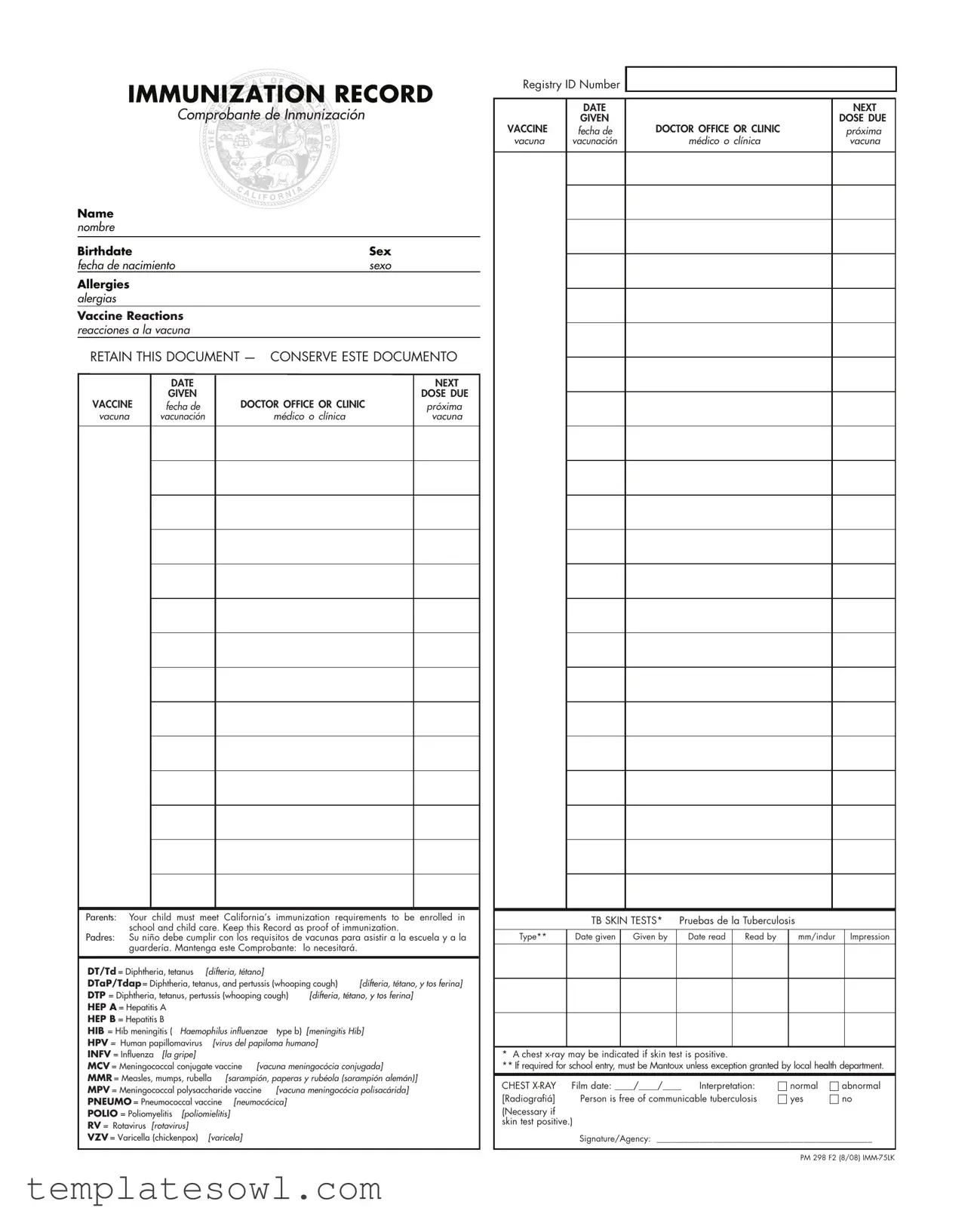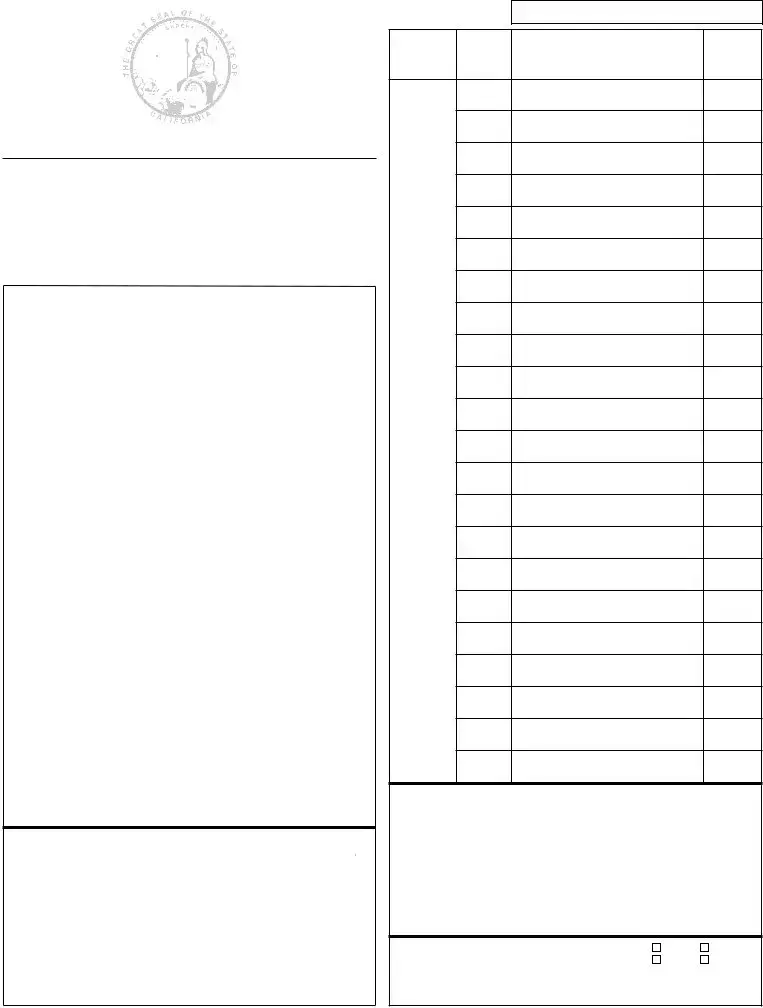What is an Immunization Record form?
The Immunization Record form is a document that keeps track of a person’s vaccination history. It includes details such as the person's name, birthdate, and any allergies. Additionally, it records the vaccines received, the dates they were administered, and any reactions to those vaccines.
Why do I need to keep this record?
Keeping this record is essential as it serves as proof that your child has met the immunization requirements necessary for school and child care enrollment. Schools and daycare facilities often require this information to ensure the health and safety of all children.
What vaccines are included in the form?
The form includes a variety of vaccines, such as DTaP, Hepatitis A and B, MMR, and Varicella, among others. Each vaccine is important for protecting your child's health against common diseases.
What should I do if my child has an allergic reaction to a vaccine?
If your child experiences an allergic reaction, you should seek medical attention immediately. It's also important to note this reaction on the Immunization Record form for future reference. This information will help healthcare providers make informed decisions during future vaccinations.
What happens if my child is not up to date on vaccinations?
If your child is not up to date on vaccinations, they may not be allowed to enroll in school or child care programs. It is crucial to work with your healthcare provider to ensure that your child receives the necessary vaccines on schedule.
How do I obtain a copy of my child’s Immunization Record?
You can obtain a copy of your child's Immunization Record from their pediatrician or healthcare provider. Additionally, many states offer online registries where you can access vaccination information. If necessary, a formal request may be needed in some cases.
What is the TB skin test, and why might it be on the form?
The TB skin test is used to determine if someone has been infected with the tuberculosis bacteria. If required for school entry, it must be the Mantoux method unless an exception is granted. A chest x-ray may be necessary if the skin test is positive.

